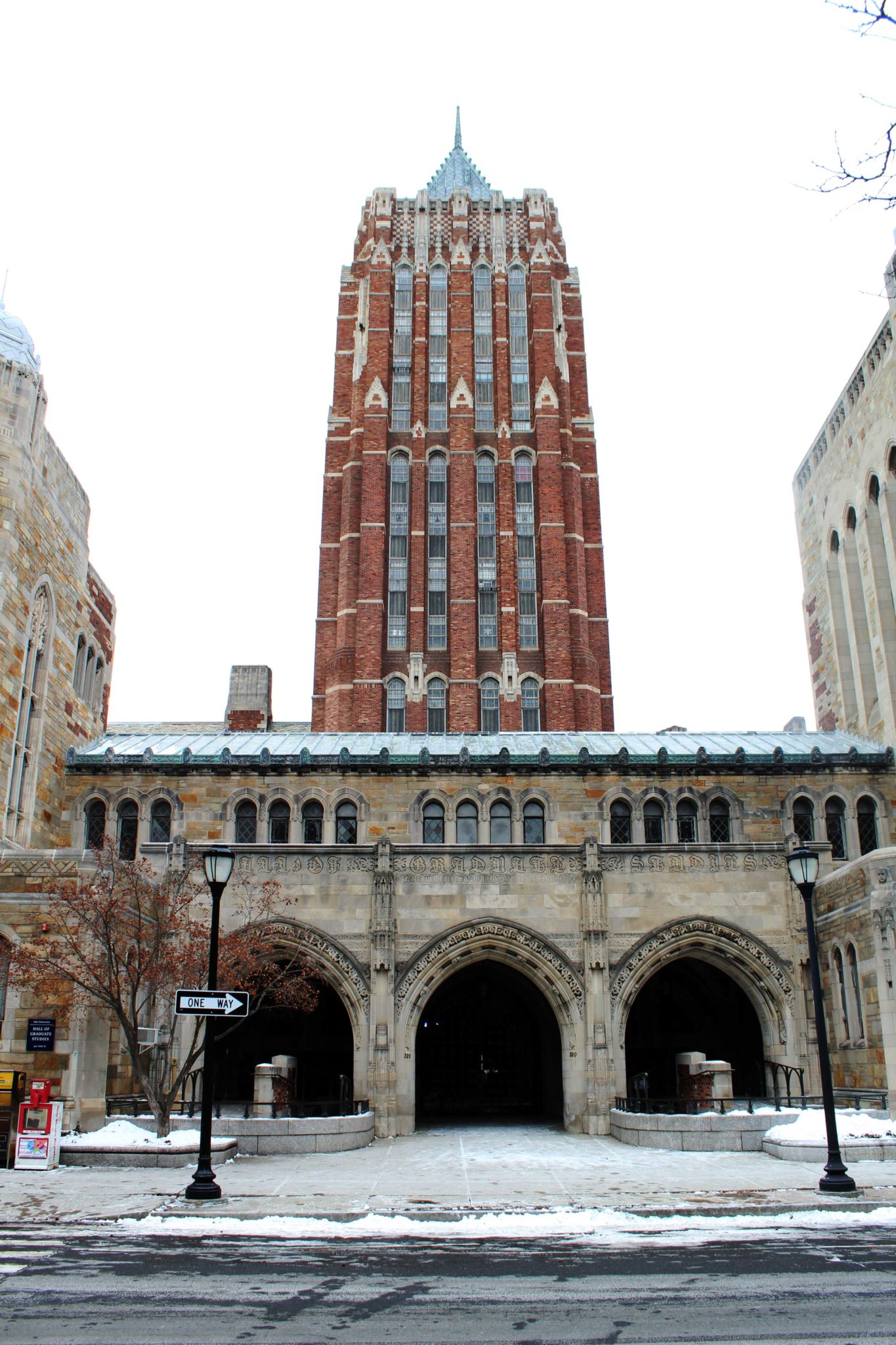
With less than a year until the start of renovations, Yale’s plan to transform the Hall of Graduate Studies into a new humanities center is taking shape.
The new center will house 15 different humanities departments and programs, as well as the Whitney Humanities Center, the Directed Studies program, the Yale Initiative of the Ancient and Premodern World and the Public Humanities program. The renovated building will consist of 14 floors, a lower level and a concourse level. It will also incorporate graduate student workspaces in floors 6 through 13, a common room for first years taking DS and other first-year humanities seminars, a more than 300-seat lecture hall and a movie screening room with 90 seats.
After a year of planning, the firm designing the new center, Ann Beha Architects, and the Yale planning team are determining the best way to receive community input on furnishing and finishing — furniture, carpets and walls — for the renovated building.
“To have a building in which different units are gathered gives the possibility to develop connections, collaborations, and that is extremely important,” said Francesco Casetti, chair of the film and media studies program, which will relocate to the new humanities center once renovations finish in 2020.
According to Faculty of Arts and Sciences Divisional Dean Amy Hungerford, the renovation plans incorporate the majority of the priorities set forth by the 320 York Street Planning Committee, which was tasked with establishing a plan for the renovations last year. However, Hungerford said, some priorities proved difficult to accommodate, such as incorporating public art into the building, due to high insurance costs.
The idea to transform the new humanities center was first introduced in January 2015 by University Provost Ben Polak, who formed the HGS Exploratory Committee to explore the feasibility and popularity of the potential project. Led by Hungerford, the committee recommended transforming the building into an “iconic humanities destination,” in a report to the provost and Dean of the Faculty of Arts and Sciences Tamar Gendler. An anonymous $50 million gift in January 2016 pushed the project forward.
All five department chairs interviewed by the News felt the administration took into account their input and suggestions when formulating the plans. Maurice Samuels, chair of the French Department, said he had the opportunity to meet with architects and the Faculty of Arts and Sciences deans to discuss his department’s needs and go over the blueprints for the new project. And Tina Lu, chair of the East Asian Languages and Literatures Department and head of Pauli Murray College, said that she has seen the plans and that her department has been involved in ongoing conversations regarding the project with the administration for several years.
Casetti told the News that the plan includes a room to screen movies in the traditional format, with film stock rather than digital copies, which fulfills the department’s request for such a space. Many universities have dismantled their projection booths to minimize costs, he said.
“It’s going to have one of the most well-equipped rooms for screening movies in different formats [for U.S. universities],” Casetti said.
Lu, Casetti, Samuels and Chair of the Near Eastern Languages and Civilizations Shawkat Toorawa expressed enthusiasm about sharing a location with other humanists on campus.
In spite of the excitement surrounding the new humanities center, several departments opted out of the move. Cross-divisional departments — Women, Gender & Sexuality Studies, Ethnicity, Race and Migration and African American studies — are well-connected to the social sciences, according to Hungerford. Philosophy professor Shelly Kagan said his department will remain in Connecticut Hall, as it is interdisciplinary and just as likely to collaborate with other divisions as with those in the humanities.
“Old campus is one of the best locations in the entire University,” Kagan said. “We’re right smack down in the middle of things.”
The English Department elected to stay in Linsly-Chittenden Hall because the faculty love the current space and because it was uncertain, given the large size of the department, whether the new center could accommodate it, according to Langdon Hammer, who chairs the department. The History of Art department will remain in Loria, and the Music Department will remain in Sprague Hall because of their ties to their respective professional schools. And the Department of Classics will stay in Phelps Hall because it has a significant library in Phelps, which could not be housed safely in the new building, Hungerford said.
Still, Tim Barringer, chair of the History of Art department, expressed excitement about the new center.
“I welcome the new humanities center, and I am sure we will be central to its activities, even if we are not physically present in the same building,” Barringer said.
Starting in May 2018, departments currently located in HGS will relocate to temporary locations, such as Arnold Hall and Swing Space.
Adelaide Feibel | adelaide.feibel@yale.edu







